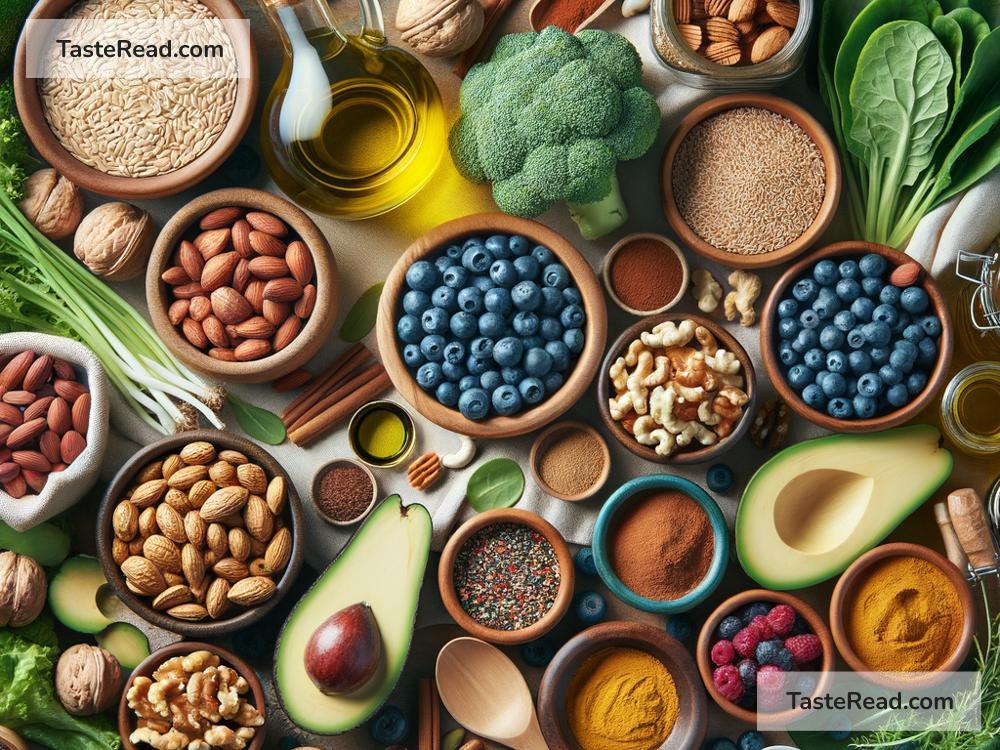Boost Your Insulin Sensitivity with These 10 Amazing Foods
Insulin is a hormone that helps your body use sugar (glucose) from food for energy. But when your body doesn’t respond well to insulin, it can lead to insulin resistance. This condition increases your risk for type 2 diabetes, obesity, and other health problems. Luckily, what you eat can make a big difference. Some foods have the power to boost insulin sensitivity and improve how your body handles sugar.
In this blog post, we’ll dive into 10 foods you can enjoy to support healthy blood sugar levels and improve your insulin sensitivity, all explained in simple English.
1. Leafy Greens
Leafy greens, like spinach, kale, and Swiss chard, are packed with fiber, vitamins, and minerals but are very low in calories. They don’t cause blood sugar spikes and contain magnesium, which plays an essential role in regulating insulin. Magnesium deficiencies are linked to poor insulin sensitivity, so adding more greens to your plate is a great move.
How to Eat Them: Add them to salads, smoothies, or stir-fries. You can even sauté them with a little olive oil and garlic for a side dish.
2. Fatty Fish
Fish like salmon, mackerel, and sardines are high in omega-3 fatty acids, which help reduce inflammation. Chronic inflammation may worsen insulin resistance. By eating fatty fish regularly, you’re giving your body healthy fats that can improve insulin function.
Tip: Choose grilled, baked, or steamed fish instead of fried options to keep it healthy.
3. Berries
Berries like blueberries, strawberries, raspberries, and blackberries are not only tasty but also full of antioxidants. These antioxidants protect your cells from damage and improve insulin sensitivity. Berries also have a lower sugar content compared to other fruits, so they won’t spike your blood sugar levels.
How to Eat Them: Snack on them fresh, toss them into a yogurt parfait, or blend them into smoothies.
4. Whole Grains
Whole grains like oatmeal, brown rice, quinoa, and whole wheat bread are high in fiber, which slows down how sugar is absorbed into your bloodstream. This helps your body use insulin more efficiently. Plus, fiber keeps you full and reduces hunger cravings that could lead to overeating.
Pick Wisely: Avoid refined grains like white bread or sugary cereals—stick to whole grain options.
5. Nuts and Seeds
Nuts like almonds, walnuts, and seeds like chia and flaxseeds are excellent sources of healthy fats, fiber, and magnesium. Studies show that eating nuts can improve insulin sensitivity and lower the risk of metabolic disorders.
Moderation Matters: Nuts and seeds are calorie-dense, so enjoy them in small portions.
6. Avocados
Avocados are a superfood loaded with heart-healthy fats, fiber, and potassium. They help lower inflammation and improve insulin sensitivity. Despite being high in fat, they’re good for your waistline because they promote a feeling of fullness and prevent overeating.
How to Add Them: Mash them into guacamole, slice them onto toast, or blend them into a creamy smoothie.
7. Cinnamon
This common kitchen spice doesn’t just add flavor—it can also help lower blood sugar levels and improve insulin sensitivity. Some studies suggest that cinnamon can mimic insulin’s effects, making sugar easier to move into your cells.
How to Use It: Sprinkle cinnamon on oatmeal, in coffee, or on roasted sweet potatoes.
8. Vinegar
Whether it’s apple cider vinegar or regular vinegar, adding a bit to your meals can improve your body’s ability to handle sugar after eating. Vinegar slows down carbohydrate digestion, which prevents blood sugar spikes and supports better insulin sensitivity.
How to Add It: Mix vinegar into salad dressings or sip a teaspoon diluted in water before meals (but don’t go overboard).
9. Beans and Lentils
Beans and lentils are rich in complex carbs, fiber, and plant-based protein. They slow digestion and prevent sudden jumps in blood sugar. Eating more beans and lentils can also balance your gut bacteria, which has a key role in insulin function.
Options: Black beans, chickpeas, lentils, or kidney beans make great additions to soups, salads, or chili.
10. Dark Chocolate
Good news! Dark chocolate (with at least 70% cocoa) is rich in antioxidants called flavonoids. These compounds can improve insulin sensitivity and boost your heart health. Just remember to enjoy it in moderation—dark chocolate still contains sugar, so stick to a small square or two.
Bonus Tips for Better Insulin Sensitivity
- Drink More Water: Staying hydrated keeps your metabolism working properly and your blood sugar balanced.
- Move Your Body: Exercise helps improve how your body responds to insulin. Even a brisk walk after meals can help.
- Limit Added Sugars: Cut out sugary snacks, soda, and desserts that can lead to insulin resistance over time.
Final Thoughts
Improving insulin sensitivity isn’t just about eating healthy—it’s about a balanced lifestyle. Start small by including one or two of these foods into your routine, and over time, you’ll see benefits. Better insulin sensitivity means better blood sugar control, more energy, and a lower risk for chronic diseases.
Healthy eating doesn’t have to be complicated or boring. With delicious options like avocado toast, berry smoothies, and dark chocolate, you can give your body the nutrients it needs while enjoying every bite!
What changes can you make today to support better insulin sensitivity? Share your thoughts in the comments!


